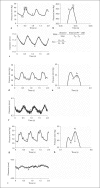A novel ovine ex vivo arteriovenous shunt model to test vascular implantability
- PMID: 22005667
- PMCID: PMC3325602
- DOI: 10.1159/000331415
A novel ovine ex vivo arteriovenous shunt model to test vascular implantability
Abstract
The major objective of successful development of tissue-engineered vascular grafts is long-term in vivo patency. Optimization of matrix, cell source, surface modifications, and physical preconditioning are all elements of attaining a compatible, durable, and functional vascular construct. In vitro model systems are inadequate to test elements of thrombogenicity and vascular dynamic functional properties while in vivo implantation is complicated, labor-intensive, and cost-ineffective. We proposed an ex vivo ovine arteriovenous shunt model in which we can test the patency and physical properties of vascular grafts under physiologic conditions. The pressure, flow rate, and vascular diameter were monitored in real-time in order to evaluate the pulse wave velocity, augmentation index, and dynamic elastic modulus, all indicators of graft stiffness. Carotid arteries, jugular veins, and small intestinal submucosa-based grafts were tested. SIS grafts demonstrated physical properties between those of carotid arteries and jugular veins. Anticoagulation properties of grafts were assessed via scanning electron microscopy imaging, en face immunostaining, and histology. Luminal seeding with endothelial cells greatly decreased the attachment of thrombotic components. This model is also suture free, allowing for multiple samples to be stably processed within one animal. This tunable (pressure, flow, shear) ex vivo shunt model can be used to optimize the implantability and long-term patency of tissue-engineered vascular constructs.
Copyright © 2011 S. Karger AG, Basel.
Figures









Similar articles
-
Reduced patency in left-sided arteriovenous grafts in a porcine model.J Vasc Surg. 2020 Jul;72(1):305-317.e6. doi: 10.1016/j.jvs.2019.06.221. Epub 2019 Nov 4. J Vasc Surg. 2020. PMID: 31699515 Free PMC article.
-
A biological alternative to alloplastic grafts in dialysis therapy: evaluation of an autologised bioartificial haemodialysis shunt vessel in a sheep model.Eur J Vasc Endovasc Surg. 2010 Dec;40(6):810-6. doi: 10.1016/j.ejvs.2010.04.023. Epub 2010 Jun 8. Eur J Vasc Endovasc Surg. 2010. PMID: 20965129
-
Endothelial cell seeding of small diameter vascular grafts.Artif Organs. 1990 Oct;14(5):355-60. doi: 10.1111/j.1525-1594.1990.tb02980.x. Artif Organs. 1990. PMID: 2241603
-
Graft modification strategies to improve patency of prosthetic arteriovenous grafts for hemodialysis.J Vasc Access. 2016 Mar;17 Suppl 1:S85-90. doi: 10.5301/jva.5000526. Epub 2016 Mar 6. J Vasc Access. 2016. PMID: 26951913 Review.
-
Prosthetic arteriovenous grafts for hemodialysis.J Vasc Access. 2009 Jul-Sep;10(3):137-47. doi: 10.1177/112972980901000301. J Vasc Access. 2009. PMID: 19670164 Review.
Cited by
-
Differential and synergistic effects of mechanical stimulation and growth factor presentation on vascular wall function.Biomaterials. 2013 Oct;34(30):7281-91. doi: 10.1016/j.biomaterials.2013.05.073. Epub 2013 Jun 27. Biomaterials. 2013. PMID: 23810080 Free PMC article.
-
Successful endothelialization and remodeling of a cell-free small-diameter arterial graft in a large animal model.Biomaterials. 2016 Jan;76:344-58. doi: 10.1016/j.biomaterials.2015.10.020. Epub 2015 Oct 14. Biomaterials. 2016. PMID: 26561932 Free PMC article.
-
Animal models for vascular tissue-engineering.Curr Opin Biotechnol. 2013 Oct;24(5):916-25. doi: 10.1016/j.copbio.2013.05.005. Epub 2013 Jun 13. Curr Opin Biotechnol. 2013. PMID: 23769861 Free PMC article. Review.
-
Regenerative and durable small-diameter graft as an arterial conduit.Proc Natl Acad Sci U S A. 2019 Jun 25;116(26):12710-12719. doi: 10.1073/pnas.1905966116. Epub 2019 Jun 10. Proc Natl Acad Sci U S A. 2019. PMID: 31182572 Free PMC article.
-
The Tissue-Engineered Vascular Graft-Past, Present, and Future.Tissue Eng Part B Rev. 2016 Feb;22(1):68-100. doi: 10.1089/ten.teb.2015.0100. Epub 2015 Oct 8. Tissue Eng Part B Rev. 2016. PMID: 26447530 Free PMC article.
References
-
- Abbott W.M., Megerman J., Hasson J.E., L'Italien G., Warnock D.F. Effect of compliance mismatch on vascular graft patency. J Vasc Surg. 1987;5:376–382. - PubMed
-
- Aoki J., Serruys P.W., van Beusekom H., Ong A.T., McFadden E.P., Sianos G., van der Giessen W.J., Regar E., de Feyter P.J., Davis H.R., Rowland S., Kutryk M.J. Endothelial progenitor cell capture by stents coated with antibody against CD34: the HEALING-FIM (Healthy Endothelial Accelerated Lining Inhibits Neointimal Growth-First In Man) Registry. J Am Coll Cardiol. 2005;45:1574–1579. - PubMed
-
- Baguet J.P., Kingwell B.A., Dart A.L., Shaw J., Ferrier K.E., Jennings G.L. Analysis of the regional pulse wave velocity by Doppler: methodology and reproducibility. J Hum Hypertens. 2003;17:407–412. - PubMed
-
- Brass L.F., Zhu L., Stalker T.J. Novel therapeutic targets at the platelet vascular interface. Arterioscler Thromb Vasc Biol. 2008;28:s43–50. - PubMed
-
- Chin-Quee S.L., Hsu S.H., Nguyen-Ehrenreich K.L., Tai J.T., Abraham G.M., Pacetti S.D., Chan Y.F., Nakazawa G., Kolodgie F.D., Virmani R., Ding N.N., Coleman L.A. Endothelial cell recovery, acute thrombogenicity, and monocyte adhesion and activation on fluorinated copolymer and phosphorylcholine polymer stent coatings. Biomaterials. 2009;31:648–657. - PubMed
Publication types
MeSH terms
Grants and funding
LinkOut - more resources
Full Text Sources
Research Materials

